Does your CPAP machine make a lot of noise? This noise can be disturbing at night as you try to relax after a tiresome day.
The best way to make your CPAP machine quieter is by placing it on a thick material, such as a towel or a rug. Such materials absorb the noise from the machine hence making it quieter.
Now, there are several reasons why your machine makes that loud noise. We shall look at all of them and possible solutions.
8 Ways to Make Your CPAP Machine Quieter
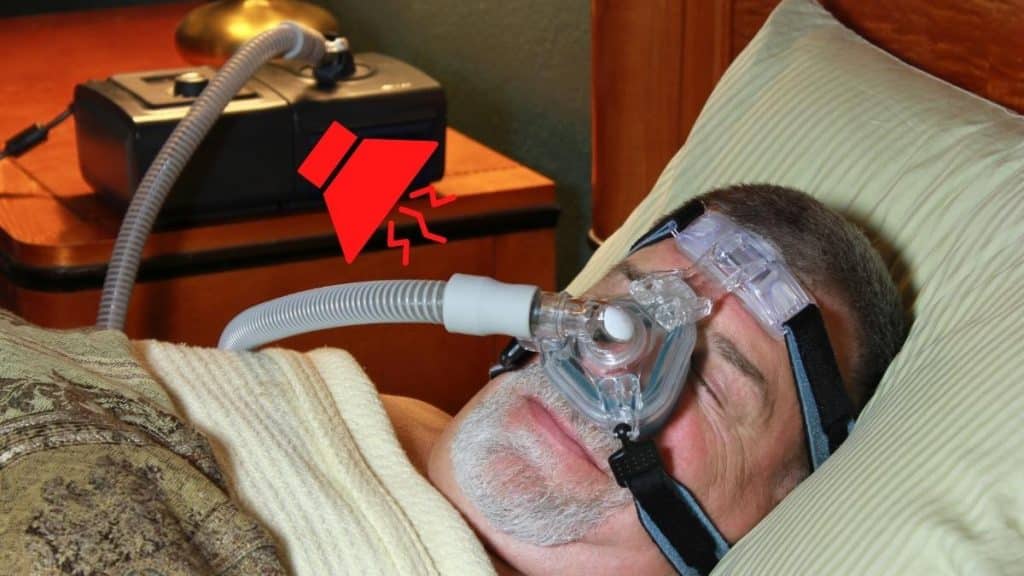
When it comes to helping those who have breathing problems while sleeping, CPAP machines are very helpful. It benefits the person and helps to stop snoring so that everyone else can sleep peacefully.
Unfortunately, many CPAP devices don’t stop snoring; instead, they create their own slightly obtrusive sound. When that occurs, there aren’t many advantages for individuals who share a bed with a CPAP machine user. It merely involves switching one grating noise for another.
How can a noisy CPAP machine be fixed? Let’s examine how things function and see if any modifications could make them run quietly.
Step 1: Move Your CPAP Machine
Simply relocating your CPAP machine further away from your head is one of the simplest and most efficient ways to make it quieter. This advice won’t reduce the volume, but it will move the noise away from your head and seem quieter to your ears.
Put a noisy CPAP machine below your ear level, to be more precise. As a result, the noise will be significantly reduced because the waves won’t be entering your ears directly. Even better if you can put it a few feet away and below ear level.
It is crucial to note that you shouldn’t set a CPAP machine down on a carpet, plush rug, curtain, or thick fabric. Certain materials may obstruct the airflow. Try to position it on a flat service with enough air access instead.
Additionally, the location you move it to needs to be clear of dust and grime. Filters will become clogged with dirt and dust. Although it will probably happen eventually, you don’t want to hasten the process. Not to mention that it might lead to numerous allergies and health problems.
Placing a small rug or foam sheet underneath your CPAP machine can help reduce noise if you realize that it is the source of the noise you hear. This will reduce some of the loudness by absorbing some of the shocks.
Ensure the foam or towel you use is not too thick and blocks the vent. Using something overly thick or fuzzy could do more harm than good. You can use a standard kitchen or bathroom towel with your CPAP machine.
Step 2: Adjust the Mask Fit
Readjusting the mask’s fit is another easy technique to make your CPAP machine feel quieter. Many people are unable to adjust their CPAP masks to their faces correctly. The mask should completely enclose your face, but it shouldn’t press against or hurt your face.
You should relax the mask if you experience any pain in any way. On the other hand, if the mask doesn’t tightly fit over the full surface of the face, tighten it. Air seeping from any of the sides is another indication that the mask is too loose.
You probably have the wrong size if you can’t easily adjust the mask to fit. Please get a new mask or cushion to ensure that it fits your face comfortably and without air leaks.
Step 3: Change the Mask Cushion
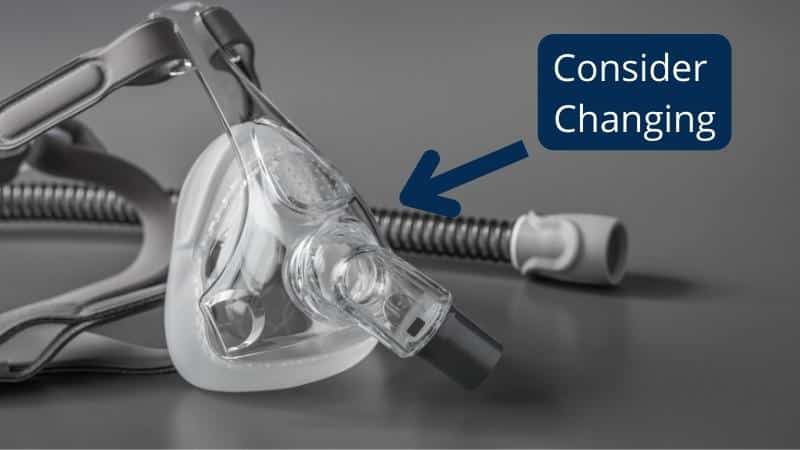
Your mask cushion goes through a lot of really unpleasant things, despite our best efforts to deny it. Every time you sleep, your mask is under strain. The cushion is exposed to oil, germs, dead skin cells, and other contaminants since it immediately contacts your face.
Although these things might not seem like much at first—other than a little bit disgusting—they eventually cause the cushion in your mask to break down, this is because the oils cause the cushion’s material to disintegrate and maybe crack as they eat away at it.
It might be time to purchase a new mask cushion if you discover that your current one is broken, appears worn, or leaks. This mask cushion is exposed to several harmful microorganisms, so you should strive to replace it before it begins to split.
For the reasons outlined above, when you buy a new mask cushion, ensure it is the proper size and fits you properly.
Step 4: Ensure the Hose Is Attached Correctly
A leaking, damaged, or incorrectly fitted hose is another typical reason why CPAP machines are loud. Listening to the noise will reveal whether the hose is to blame. The hose is most likely to blame if the unpleasant CPAP noise sounds like a whistle or a hiss.
The hissing sound occurs if the hoses are not securely fastened to the machine. Examine the area where the CPAP hoses join the CPAP machine to ensure that they are securely fastened. Any problems you notice should be fixed.
Additionally, hose kinks or bends might make the CPAP machine work harder and produce a louder sound. Run your palm along the entire hose to ensure there are no kinks. If you discover the hose bent, straighten it out.
Inspecting the hose for bends or kinks is advisable before retiring to bed. This guarantees you will receive enough air and the noise level won’t be too high.
Step 5: Add a Hose Cover
The air pumping through the pipe can make quite a bit of noise even if there are no leaks or bends. Unfortunately, there isn’t much that can be done to resolve this problem short of purchasing a brand-new CPAP machine or adding a hose cover. The hose cover is the more cost-effective and efficient of these two solutions.
Something that wraps around the hose is called a hose cover. This makes it possible for it to be insulated, which lowers noise levels and keeps rain out. Hose covers are an excellent technique to eliminate any noise brought on by air flowing through the hose, despite the fact that they may not seem very effective.
Step 6: Change the Machine’s Filters
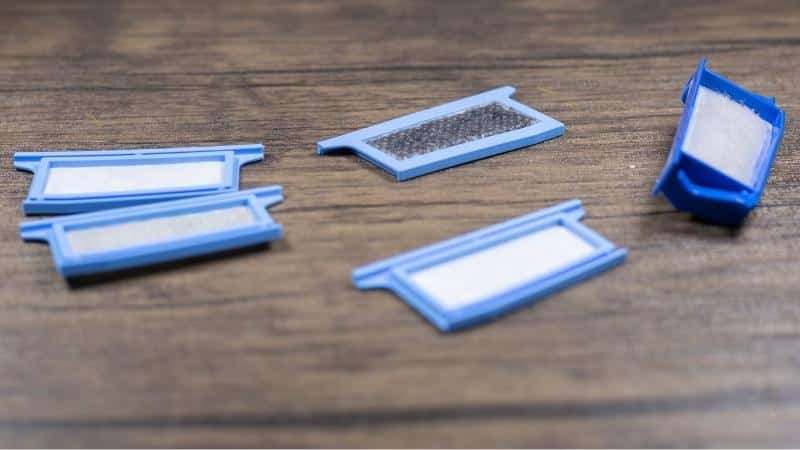
Your CPAP machine filter puts in a lot of effort to keep you safe and the machine functioning effectively, even though you may not be aware of it. It protects both by removing dust, dirt, and allergens from the airflow.
The filter will become more clogged with dirt the longer your machine runs. Every time this occurs, the filter will become clogged and unclean, making the machine work harder and noisier. The CPAP machine filter must be replaced to resolve the problem of a loud CPAP machine.
However, you shouldn’t simply replace the filter when the CPAP machine becomes loud. For information on how frequently you should change it, read your instruction handbook. This is in the interest of your health and wellbeing. Not to mention that it will keep your machine operating efficiently and with minimal noise.
Related reading:
Step 7: Check the Humidifier
Not all CPAP devices come with a humidifier. Although CPAP machines with humidifiers are advantageous, they can be noisier and require more maintenance, especially if they aren’t kept up with properly.
You should precisely check the machine’s water levels. If they drop too low, the machine may start gurgling or bubbling, which may be annoying. The likelihood of this noise occurring while you breathe in is high.
Use only distilled water when you replenish the humidifier. Minerals in tap water and other unfiltered fluids will cause the machine to clog. It will thus be louder and break much sooner. To keep your CPAP machine functioning properly, use distilled water.
Also, have a look at the humidifier’s hose in addition to the water level. When inhaling, it could make an even louder noise if not configured properly. The hose needs to be securely fastened and shouldn’t bend at all.
Step 8: Get a New CPAP Machine
Your CPAP machine may need to be replaced if you have tried every feasible fix and it is still too noisy. Many more recent models were created with low decibel ratings, making them significantly quieter than earlier models.
The RedMed Airsense 10 Elite is among the most silent CPAP devices. At 26 dB, this model is barely audible. The CPAP machine is user-friendly and extremely quiet, allowing anyone to adopt it into their sleep pattern.
The IntelliPAP AutoAdjust CPAP Machine is yet another incredibly quiet alternative. This alternative has a five-year warranty and a decibel rating of about 26. Being designed for both home use and travel makes it excellent for people constantly on the move.
Related reading:
Are All CPAP Machines Loud?
Modern CPAP devices are generally fairly quiet. On your machine’s model, though, it may depend. When beginning CPAP therapy, one of the main worries for most people (and their partners!) is whether or not their equipment will be loud. The machine model you are using will determine the response to this query.
Thankfully, the majority of modern CPAP machines are very quiet. As a result, you and your companion can sleep peacefully without worrying about a noisy machine.
The simplest way to describe the sound produced by a CPAP machine is as “continuous and soothing white noise.” You might need to modify your mask to minimize leaks if your CPAP machine makes a lot of noise.
Are New CPAP Machines Quieter?
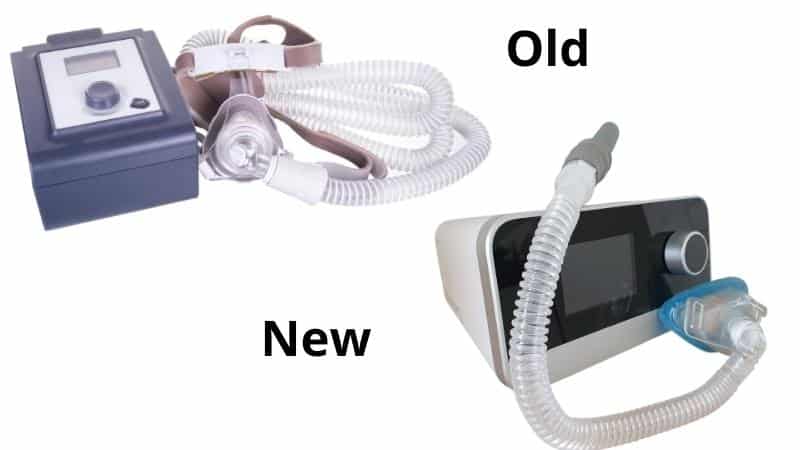
The most recent CPAP machine models are now intentionally quiet. Technology breakthroughs have quieted CPAP users’ once-quite-loud experience from a decade ago.
What is The Most Quiet CPAP Machine on The Market?
Though there are several CPAP machines on the market, ResMed’s AirSense 10 Auto Card-to-Cloud is the quietest of all. This device has many comfort features like Smart Start/Stop, AutoRamp, and Climate Control to make it easier for you to transition into therapy.
You can learn more about the AirSense 10 over at ResMed’s store here.
The fact that this machine consistently receives 5-star ratings that note how quiet it is gives us the confidence to name it the quietest CPAP machine. An optional side cover can make the device even silent if you decide not to use a humidifier in conjunction with your therapy.
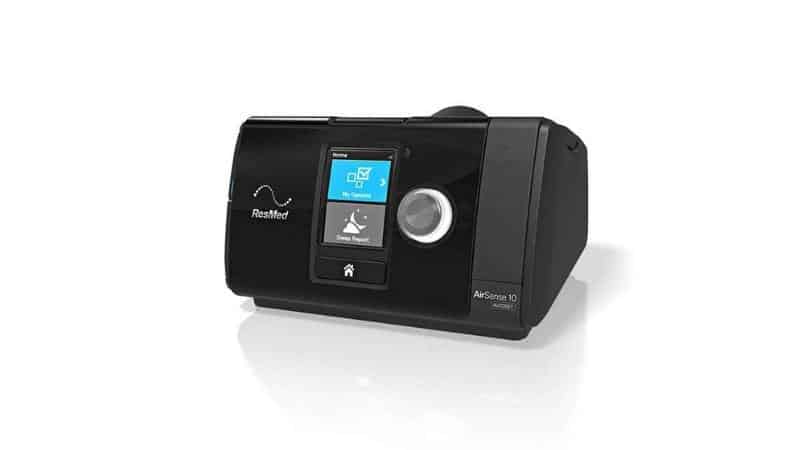
As demand for CPAP machines increased, ResMed re-released the AirSense 10 machine without a wireless modem even though production of the original model ended when the AirSense 11 was introduced. Without the modem, you cannot use the MyAir app to track therapeutic data or wirelessly transfer data to a healthcare practitioner.
To track therapeutic data, the AirSense 10 Auto Card-to-Cloud comes with an SD card and will have a more in-depth view of your data enabled by default. Even if the AirSense 11 has more sophisticated data tracking capabilities, the AirSense 10 AutoSet Card-to-Cloud is superior in terms of volume.
Why Does my CPAP Make Noise When I Exhale?
When there is a leak at the mask site, when the seal is not completely complete, usually close to the mouth or eye or from the exhalation port, sounds can be heard.
A CPAP mask seal leak is the most typical sort of leak issue. When the mask and facial skin come into contact, air from inside the mask leaks; any mask leak must be fixed because it compromises the air pressure’s integrity.
Can You Wear Earplugs With a CPAP Machine?
Although earplugs may seem like an easy answer, they can reduce the amount of noise that disturbs you while you sleep. While getting used to the CPAP machine, earplugs are a great option for you and your spouse.
They come in various designs, materials, and sizes to meet your needs. To avoid ear infections, clean and replace the plugs frequently.
Are ResMed CPAP Machines Loud?
Thanks to technological advancements, CPAP machines are much less noisy, so your sleeping companion won’t be bothered. The best way to describe the sound of a CPAP machine is as “constant and cozy white noise.”
Since you are supposed to be sleeping, treatment shouldn’t be spoken in a voice louder than a whisper. If the components of your equipment are not appropriately linked, air may leak out (or “leak out”) and cause loud noises. Usually, you can identify the machine, humidifier, tube, or mask as the source of the noise or leak.
Final Thoughts
Having sleep apnea is not simple. When attempting to have an excellent night’s sleep, there are numerous factors that you need to worry about. When you first start using a CPAP machine, there are several things that you will run into.
As a frequent user of a CPAP machine, issues including air leakage, dry airways, and unpleasant noises will arise. If you’re new to using a CPAP machine, store it out of your reach and below your ears to help with noise reduction.
To ensure that clean airflow enters the filter, provide the space where you place your CPAP machine free of dust, grime, and debris.
